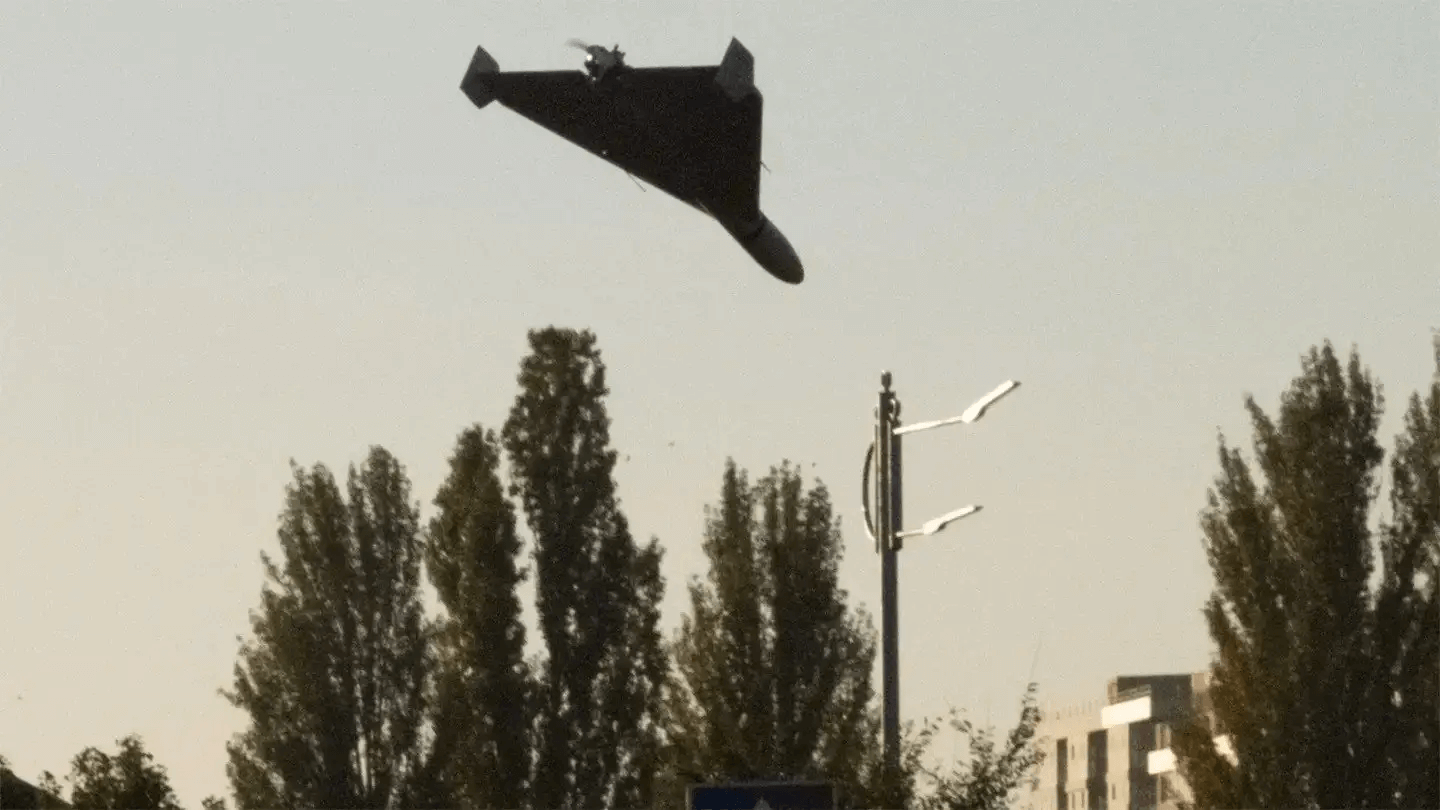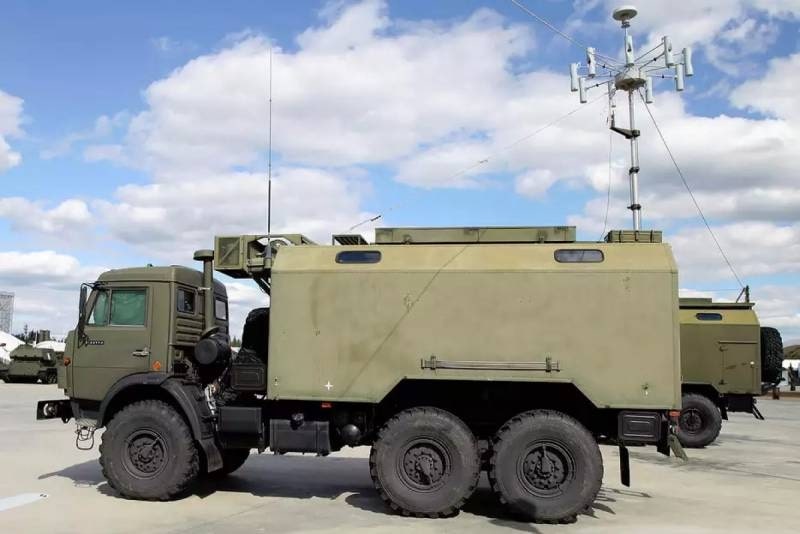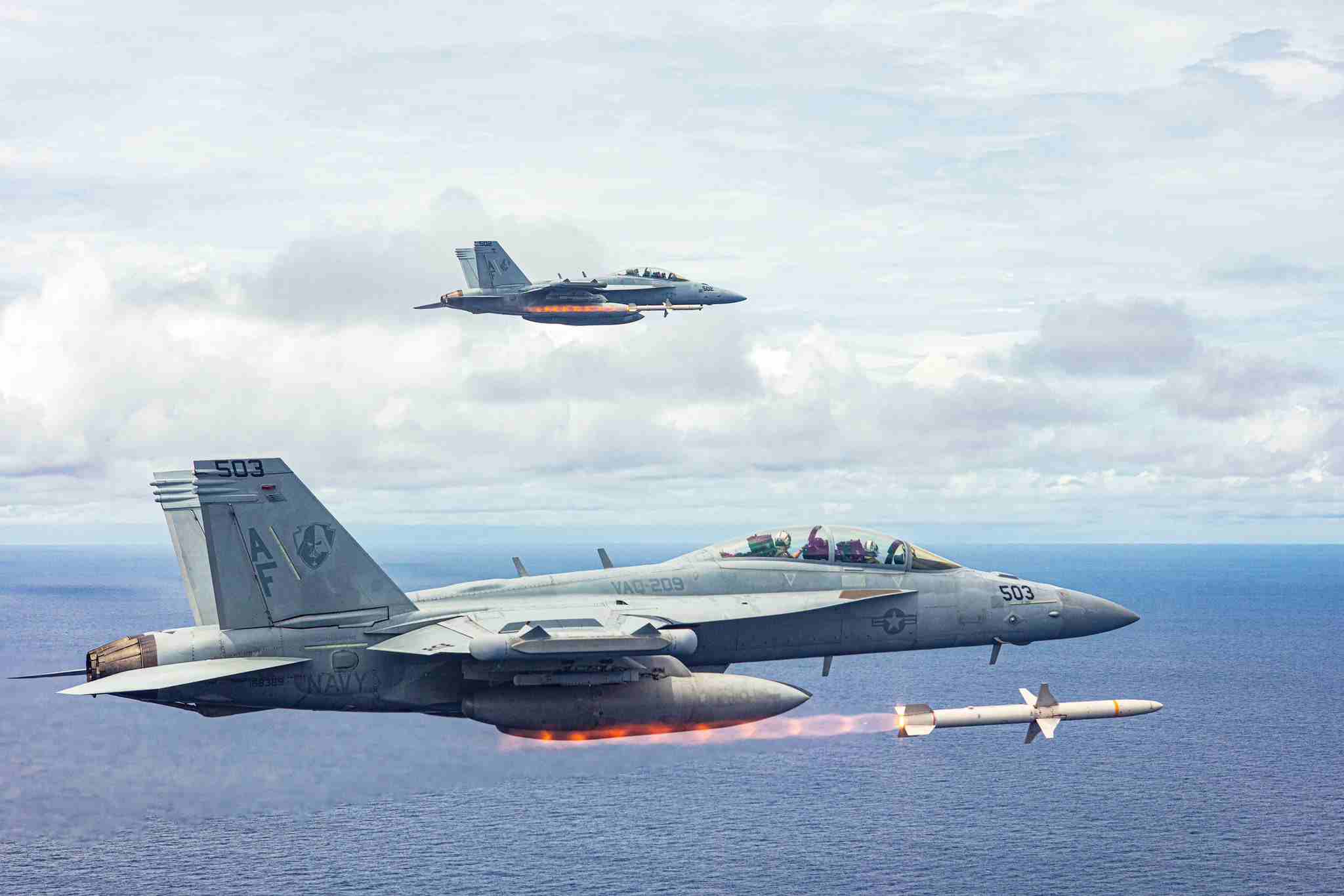Electronic warfare (EW) has been a key factor in the Russia-Ukraine conflict, affecting both sides’ military operations.
Russia’s invasion began with its largest combat deployment of EW capabilities. Russian electronic attack systems and aerial decoys jammed and confused Ukraine’s air defense radars, many of which had to be taken offline and relocated.
Ukraine is a ‘knowledge ground’ for the world to gain valuable insights about the performance of its technologies amid electronic interference. Digital harassment can render information useless and make militaries vulnerable.
EW systems vary in size and form, from pocket-sized devices to truck-mounted radar arrays and transceivers to airborne or ship-borne systems. Ukraine and Russia have engaged in a cat-and-mouse game to jam each other’s systems.
Space has been a great enabler in all operations, including communications, ISR, navigation, and targeting. Both sides made attempts to jam data links and GPS signals. Ukraine war has, for the first time, democratized warfare through the introduction of drones in large numbers. Electronic jamming and directed energy weapons (DEW) supported anti-drone operations.
The combined arms effort of the Israelis against the Syrians in Lebanon’s Bekaa Valley in June 1982 was one of the most spectacular operations of modern warfare. The electronic suppression of enemy air defenses woke the world up to the importance of EW.
The more recent Hezbollah communications device explosions, including pagers and walkie-talkies that sounded like fireworks and gunshots, have brought a new dimension to modern warfare. It is time to revisit and draw lessons.
Philippines To Deploy Fighter Jets, Patrol Gun Boats Amid Escalating Tensions With Beijing In SCS
Why Electronic Warfare?
Electronic warfare includes all actions in the entire electromagnetic spectrum to intercept, analyze, manipulate, or suppress the enemy’s use of the spectrum and to protect friendly use of the spectrum from similar attacks by an enemy.
EW is an element of the technological aspect of strategy and an element of combat power. EW is a military action that involves using electromagnetic energy to control the electromagnetic spectrum (EMS) for military and intelligence purposes.
Depending on their operational range, EW can be divided into tactical (up to 50 kilometers), operational-tactical (up to 500 kilometers), and strategic (over 500 kilometers) categories.
EW aims to control the EMS by exploiting, deceiving, or denying enemy use of the spectrum while ensuring friendly forces can use it. EW uses the EMS to sense, protect, and communicate while also disrupting, denying, and degrading the enemy’s ability to use the signals. By exploiting the full EMS and cyber effects, a military force can pre-empt adversarial threats and respond to attacks electronically.
EW includes areas such as radar systems, RF engineering, electro-optics, counter-measure development, signature management, signal and image processing, software engineering, sensor systems, and simulation.
Electronic Warfare During Russia’s Initial Invasion
Since the 2008 military reforms, the Russian Federation has invested heavily in Cyber and EW as an asymmetric response to NATO military capabilities that depend on sophisticated electronic systems.
Russia’s invasion force also included its largest combat deployment of EW capabilities to date. During the initial invasion, the VKS (Russia’s Aerospace Forces) conducted intensive attacks on Ukraine’s Ground-Based Air Defenses (GBAD), using a combination of cruise and ballistic missile strikes and anti-radiation weapons.
Russian electronic attack systems and aerial decoys jammed and confused Ukraine’s air defense radars, many of which had to be taken offline or relocated.
During the 2014-2022 war in eastern Ukraine, Moscow sent propaganda and fake orders to Ukrainian troops and civilians by spoofing the local cellular network, probably using the RB-341B Layer 3 system.
EW By Ukraine
EW has been a key factor in the Russia-Ukraine conflict, affecting both sides’ military operations. Both sides have used EW to jam drones, though unfortunately, because of a lack of coordination, many times friendly drones also got jammed.
Both sides have used spoofing capabilities. In a spoofing attack, a person or program successfully identifies as another by falsifying data to gain an advantage and physically take over the entity. Electronic intelligence has been used to capture enemy transmissions.
Ukraine has used US-supplied portable counter-drone jammers. The USA has reprogrammed Ukraine’s newly acquired F-16 EW systems to help the jets survive and not give away sensitive NATO electronic information. Ukrainian Startups have developed encrypted signal-hopping walkie-talkies that are easy to use and can be linked to cell phones.
The little-known Ukrainian “Pokrova” system appears capable of suppressing Russian satellite navigation systems like GLONASS and spoofing them by replacing genuine signals with false ones. According to Ukrainians, because of this system, more than 20 of the over 40 missiles launched by Moscow in a January 2024 attack failed to reach their targets.
Ukraine also managed to capture some high-value Russian EW assets during the conflict and is reported to have handed these over to allied nations for technical intelligence purposes.
Ukrainian company Kvertus is fielding a back-packable jammer weighing 8 kilograms for individual soldiers. The jammer is intended to block signals in the 850-to-940-megahertz range, the most commonly used bands for first-person view (FPV) small drones.
Ukraine’s government hosted a hackathon for firms to work on ways to jam Iranian Shahed drones that have been causing havoc.

Russia’s Initial Underutilised EW Effort
Russia had not fully capitalized on its EW capabilities initially. Despite the combined kinetic and non-kinetic attacks on Ukraine’s GBAD network, the Ukrainian Air Force (UAF) prevented the VKS (Russian Air Force) from gaining air superiority.
This was significant as Ukraine was hugely outnumbered. In some cases, Ukrainian pilots flew below 100 ft to hide below the radar horizon of Russian SAMs (surface-to-air missiles), using ground clutter and terrain masking to avoid detection before popping up to engage VKS fighter aircraft.
Because of the lack of equipment, Russian soldiers often used civilian handheld radios and mobile phones instead of secure, jam-resistant tactical radios. Ukrainian EW forces exploited these weaknesses and managed to eavesdrop on Russia’s unencrypted transmissions, jam their communications, and perform targeting for long-range weapons using direction-finding techniques.
Ukrainian EW forces also used electronic attack capabilities to degrade the performance of VKS’s airborne early warning platforms. Russia’s failure to de-conflict EW activities with the rest of its operations led to unintentional jamming (electronic fratricide) of its own forces, thus enabling Ukrainian GBAD to become more effective.
Russia lost many aircraft in the initial months and was forced to depend on costly ballistic and cruise missiles for offensive operations. Effectively, Ukraine managed ‘Air Denial,’ a state of mutually denied air superiority.
Many Russian aircraft and helicopters, including the US Stinger, the Russian Igla-series, and the more sophisticated laser-guided UK Starstreak, were shot by man-portable air defense systems (MANPADS), which are difficult to defeat by conventional countermeasures.
Upgraded digital infrared seekers not only improve targeting but are also resistant to countermeasures, such as flare rejection. It has now become imperative to develop or acquire advanced laser-based Directed Infrared Countermeasures to safeguard air operations against the growing MANPADS threat.

Russia’s Reviewed EW Effort
Russia’s density of the EW systems it can deploy is thanks to years of investment. Russia had a fresh look and was later able to use EW to counter Ukrainian UAS.
It is estimated that Russia has 18,000 to 20,000 dedicated troops in electronic warfare units. Russian EW forces also attempted to jam NATO ISR aircraft operating on the periphery of Ukraine’s border. Russia moved long-range SAMs forward to keep NATO surveillance assets at a distance.
When Ukraine received Excalibur artillery shells from the U.S. in March 2022, they were immediately the military’s weapon of choice. They used GPS navigation. But by 2023, they started missing the targets. Russian electronic jamming, which overloads a receiver with noise or false information, was blocking the artillery shells’ GPS.
Russian Pole-21 and RP-377 jammers were being used to thwart Ukrainian small drone attacks. As the US Air Force’s GPS satellites flew overhead, Russian forces attempted to block their signals. The EW was used to disrupt communications and jam GPS signals. The precision-guided munitions were jammed, or their target coordinates were “spoofed,” sending them to the wrong location.
Similar issues began to occur in April 2023 almost immediately following the delivery of Joint Direct Attack Munitions (JDAM) guided aerial bombs and Guided Multiple Launch Rocket System (GMLRS) long-range missiles, which can be used with U.S-made High Mobility Artillery Rocket Systems (HIMARS). Russian soldiers were also jamming communication with Ukrainian drones, causing both reconnaissance and strike drones to crash, land on the spot, or even return to base.
Currently, with the front line largely static amid positional fighting, Russia has positioned one large EW system along every 10 kilometers of the front line. In the “War of Drones,” Russia’s jamming capabilities have presented a major challenge on the front lines.
For months, the aerial drones supplied by Quantum Systems, a German technology firm, had worked smoothly for Ukraine’s military, targeting tanks and troops. But by late 2023, the machines abruptly started falling from the sky as they returned from missions. Russians were jamming the wireless signals that connected the drones to the satellites they relied on for navigation, leading the machines to plummet to Earth.
At least three out of five Russian EW brigades, whose operators gained experience in Syria, are involved in the war in Ukraine. Russia’s Shipovnik-Aero EW complex is particularly effective at countering Ukrainian drone operations. The system has a range of 10 kilometers and can control a drone while simultaneously obtaining the coordinates of the operator’s location with an accuracy of one meter.
The Krasukha-4 is one of Russia’s most advanced EW systems, capable of operating at a distance of up to 300 kilometers. The system is designed mainly for jamming airborne fire control radars or satellites. It can disorient AIM-120 AMRAAM missiles and Patriot air defense radars.
Meanwhile, Ukraine has tried to use EW to help its air defenses confront Russian drones and missiles. Russia has interfered with signals in an attempt to disrupt global positioning system satellites that help Ukraine employ guided aerial and artillery munitions, many of which have been provided by the US.
Russia has innovated by making smaller, mobile electronic weapons, like anti-drone guns and tiny jammers that form a radio-wave bubble around trenches.
EW Lessons From Ukraine
It is clear that EW will be a key enabler of the future. The jamming and spoofing that blankets fighting in Eastern Europe offers a trial against Russian tools rarely seen in action. Each country needs to develop a full spectrum of Suppression and Destruction of Enemy Air Defence (SEAD/DEAD) capabilities.
Air and Space-based ISR will remain vital to gaining intelligence on adversary air defenses and the development of countermeasures. Mission planning, mission data, onboard defensive aids, and expendable active and passive countermeasures will be crucial for maximizing survivability.
Offensive systems, including electronic attack and anti-radiation weapons, will be required to disrupt, deceive, and destroy hostile air defense networks. If you can stop the enemy’s ability to communicate, you really hinder them.
EW will require adequate funding, research, and development. Technology development is an unending process. Low-cost autonomous air systems, designed to operate in swarms and use compact EW payloads to disrupt and confuse air defense systems, are the future. Sophisticated EW equipment and jam-resistant navigation gear would be required.
Doctrines and training need to be reviewed. Cyber and Electromagnetic activities cannot be an afterthought. They are a pre-event act. New tactics would need to be evolved.
US Needs Fresh Look
In Iraq, the US military operated a host of electronic warfare systems, including the Navy’s EA-18G Growler carrier-based aircraft and the Air Force’s EC-130H Compass Call, along with ground forces that have various jammers integrated into their vehicles.

The US soon found itself engaged in a battle for spectrum superiority similar to what Ukraine is experiencing today. But instead of small drones, it was dealing with insurgents who were using common devices such as garage door openers to detonate roadside bombs.
Almost 20 years later, in October 2021, former Vice Chairman of the Joint Chiefs of Staff Air Force Gen. John Hyten said that the armed forces were still struggling to master the electromagnetic spectrum.
There’s a moonshot project highlighted in the recently released US “National Spectrum Strategy” that calls for the development and testing of large-scale dynamic spectrum sharing across multiple types of equipment for contested environments overseas. This will mean applying artificial intelligence to spectrum management. It will help de-conflict military and civilian spectrum use in benign environments and when the military vies for electromagnetic spectrum dominance during war.
To Summarise
The Ukraine-Russia conflict has seen more EW than we have ever seen before. It’s a war that is a battle for spectrum dominance.
Emphasis on electronic warfare is a must. US Air Force Secretary Frank Kendall says, “My own experience suggests that this is a historically neglected area that can have an oversized impact.”
Since 1991, a separate branch of the Russian military has been dedicated to EW, developing over 60 different EW device models with various purposes and ranges.
Using electromagnetic waves to flummox and follow smarter weapons has become a critical part of the cat-and-mouse game between Ukraine and Russia. The anti-drone gun can send a burst of radio signals to overwhelm a drone’s communication links. 90 percent of the American and European systems coming to Ukraine were not prepared to meet the EW challenge.
The United States, China, and others have taken note. Chinese experts have also exhaustively chronicled which Russian electronic attacks were most effective against NATO systems and, in turn, where Russia failed.
The high level of EW in Ukraine is nothing compared to what the US could face in a conflict with China. In fact, China is trying to understand how the US is reacting to Russian EW assaults in Ukraine.
An EW suite that can effectively disrupt the adversary’s C4ISR (command, control, communications, computers, intelligence, surveillance, and reconnaissance) will be needed. China’s People’s Liberation Army EW capability is designed to target space.
Experts are now debating whether EW should be elevated to a “war-fighting domain” on par with land, air, sea, space, and cyberspace.
The US Defence Department, in a 2020 “Electromagnetic Spectrum Superiority Strategy,” talked of achieving spectrum dominance and integrated EW in all domains but stopped short of declaring it a domain unto itself.
“The war in Ukraine has been the performance-enhancing drug for NATO’s electromagnetic thinking,” Gen. Charles Q. Brown Jr., the chairman of the Joint Chiefs of Staff, said. “It has been the thing that concentrates minds.”
If you do not dominate the spectrum, the world will soon be buzzing with freely loitering kamikaze drones. No side can remotely operate even their surface or sub-surface robotic systems without mastering the electromagnetic spectrum. EW is already at the speed of light, and if you embed AI, it will be at the speed of thought.
- Air Marshal Anil Chopra (Retired) is an Indian Air Force veteran fighter test pilot and former Director-General of the Center for Air Power Studies in New Delhi. He has been decorated with gallantry and distinguished service medals while serving in the IAF for 40 years.
- He tweets @Chopsyturvey
- Follow EurAsian Times on Google News




